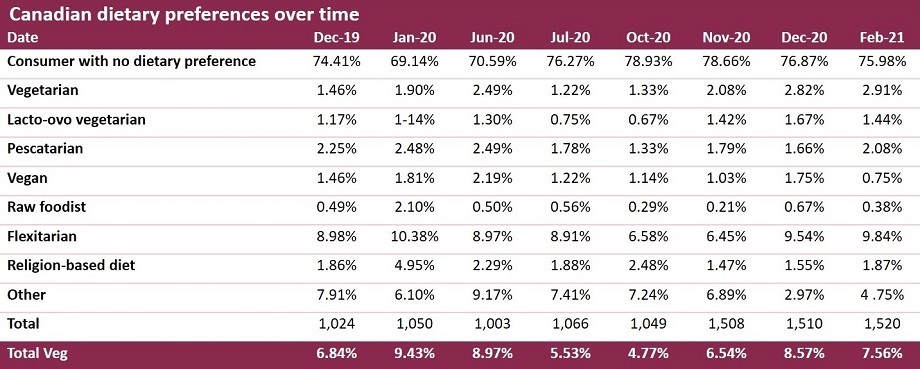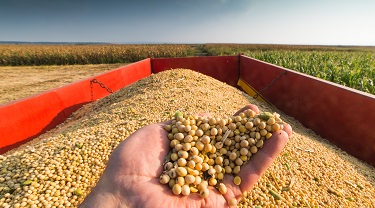The world’s population is growing exponentially and so, too, has its demand for food.
In the past 200 years, humanity has exploded from an estimated one billion people to more than 7.8 billion in 2021. In some developing economies, that boom has led to a rising middle class and a parallel increase in demand for meat protein—often viewed as a luxury. At the same time, the middle class in developed countries are increasingly turning away from animal protein to plant-based alternatives.
With the global population expected to hit 8.5 billion by 2030, the Canadian plant-based protein industry is in a prime position to dominate the world market. In fact, a 2021 Protein Industries Canada (PIC) report conducted by Ernest & Young anticipates the global industry’s valuation will hit $185 billion by 2035. As demand for value-added protein alternatives grows, PIC is helping the alternative protein industry take a multi-faceted approach to increase its footprint domestically and on the world stage.
To firmly establish a presence globally, create jobs in Canada and leverage our international reputation for food safety and excellence, our focus at PIC is on moving beyond supplying the world with raw materials towards being a global leader in innovative and sustainable plant-based, value-added consumer goods.
Created as part of the federal government’s 2018 Innovation Superclusters Initiative to create jobs, excellence in innovation and sustainable growth in industry, PIC has partnered with new and established companies to create more than 889 jobs, 200 new products and 77 new processes.
The rise of ‘flexitarians’

Source: Dalhousie University Agri-food Analytics Lab
Surprisingly, Canadian demand for plant-based alternatives is greatest with fans of the new “flexitarian” diet. A recent Dalhousie University Agri-Food Analytics Lab (AAL) report found that flexitarians—those whose dietary choices are less about morality and more about clean eating and environmental concerns—are the second-largest dietary group in Canada after those with no preferences. The report approximated that in 2021, 9.84% of Canadians identify as flexitarian compared to 7.56% vegetarians.
“In terms of wholesale adoption of a plant-based diet, vegetarianism and veganism remain on the fringe of dietary preferences, though the interest in plant-based diets has risen over the past 15 years,” the report notes.
“Flexitarianism, then, offers a significant growth area for those manufacturers looking to attract a new client base, as flexitarians tend to be less dogmatic about the morality issues of eating meat.”
Diving into generational demographics, it’s clear that the two largest cohorts are open to embracing a diet of more plants and less meat: 50.31% of millennials and 45.15% of Baby Boomers, according to the AAL report. Interestingly, more women (54.83%) than men (36.65%) have considered reducing their meat intake.
The trend also extends to dairy, with 66.22% of Canadian consumers having used some sort of dairy alternative such as soy, oat and almond products. Health Canada is on-trend, as well, with the recent Canada food guide recommendations to move fruits, vegetables, pulses and legumes to the top of the pyramid.

Main sources of vegetable proteins include the following:
- Oilseed protein: Soybeans, rapeseed/canola, cottonseed, peanut/groundnut, sunflower seed, sesame, safflower, flaxseed, linseed.
- Cereal protein: Wheat, corn, rice, barley, oats, sorghum, grain amaranth.
- Legume and pulse protein: Beans, chickpeas, guar, lentils, lupines and peas.
- Leaf proteins: Alfalfa, lucerne, tobacco, mulberry bush, grass, sugar cane, sugar beet, clovers.
Overall, the global demand for grains and pulses, including soy, peas, wheat, canola, oats and lentils, for the production of alterative protein is conservatively estimated to hit 41 million tonnes by 2035, with soy and pea farming taking more than half the market share. What does that mean for Canada’s agri-food industry?
In short, Canada is perfectly poised to embrace the opportunity to become a value-added, plant-protein producer from its existing position as the world’s leading exporter of pulses, peas and lentils. In 2019, wheat, canola, pulses and soy accounted for 71% of Canada’s total crop exports.
Creating consumers in the lab
As an increasing number of Canadians consider moving away from meat-based diets, there are several barriers to adopting plant-based protein options.
- The taste, mouth feel and texture of meat alternatives. Of those Canadians surveyed by AAL, 42.3% said plant-based products “taste strange.” Not surprisingly, one of the key reasons consumers favour one meat alternative over another is that the product resembles and tastes like meat. Success stories such as Beyond Meat and Impossible Burger, prove the relevancy of PIC’s focus on research and development (R&D) investment, innovation and agri-research. In other words, convincing Canadians to eat more plant-based protein doesn’t start with what’s on their plate—it starts in the lab.
- Consumer reluctance to replace one raw material—animal protein—with another, like dried lentils, says Dalhousie University’s report. “Consumers need to be educated on the potential of plant-based proteins. While there are many ready-made meal options, consumers who want to have less process options may need to be taught how to prepare meals using plant-based proteins such as legumes, from scratch.”
- Lack of consumer education. Nearly 47% of Canadians admit they don’t buy these products—despite being in plain sight in meat sections of grocery stores—because they don’t understand all the ingredients.
- Higher costs. Processed plant-based products are more expensive than meat, preventing the wider adoption of plant-based proteins by Canadians. Those greater costs are passed on to consumers as a result of elevated R&D costs and limited economies of scale, particularly for smaller or emerging producers.
Global leadership in plant-based proteins
These barriers—and many others—are PIC’s main focus. Supported by $150 million in government funding, we’re co-invested with private companies in R&D to build Canada’s strength as a commodities powerhouse through a self-sustained, eco-system built on innovation. It’s something of a personal mission: Every person on our senior leadership team grew up on Prairie farms and many of us are still involved in our family’s farming or ranching operations.
One of our key partners is Export Development Canada, which leverages their resources to identify and target new markets. As the international risk experts, EDC works with agriculture organizations and in 2020, facilitated more than $5.6 billion in transactions in support of Canadian agriculture. Leveraging the Canadian agriculture industry’s reputation for safe and clean agri-products, EDC helps with risk management, financing and working capital.
Through our partnerships, PIC is accelerating Canada’s transformation from commodities producer to value-added product producer, using four main priorities:
- Create: Advanced technologies with investments aimed at improving processing efficiencies and developing novel food ingredients.
- Grow: Technology, predictive analytics, automation and sensor technology to improve production efficiency, sustainability, and cost reduction.
- Make: Improvements to current processes and develop new tech and products that allow companies to scale and attract investment.
- Sell: Into new markets by building on Canada’s brand advantage.
You should also check out
Demand for organic products is growing as people become more health-conscious, incomes rise, and retail distribution expands.
Growing the future of food
Canada’s established reputation as an international agricultural leader is just one part of our value proposition in becoming a global presence in the plant-based food sector.
The industry also has access to an expanded domestic market through the United States and Mexico, as well as Asia and the European Union. For example, the Canadian agricultural industry’s reputation for food safety marries well with stringent food safety guidelines in the Eurozone.
Moving forward, PIC is working on solutions to help new and established companies facing challenges in this agri-sector. They include:
- establishing a regulatory environment that supports innovation;
- attracting increased capital investment;
- supporting collaboration; and
- building access to labour, skills and talent to support business initiatives.
Through partnerships with government agencies, like EDC, our goal is to build the capacity, infrastructure and innovative thinking to put Canada’s agri-food industry on every table worldwide.






